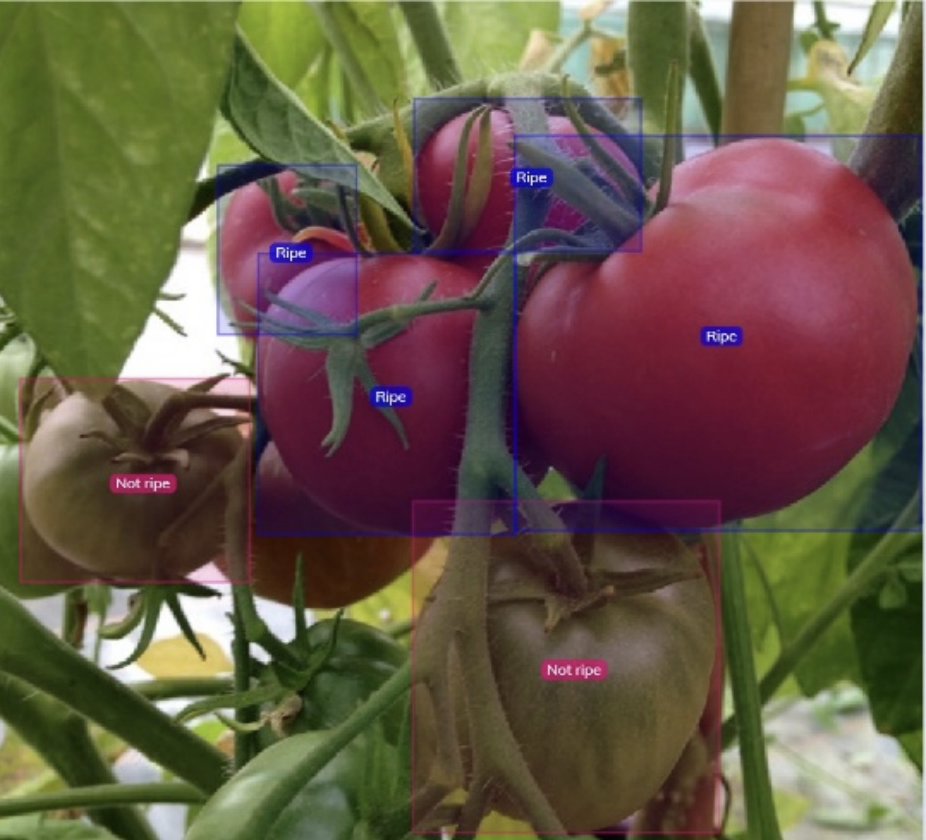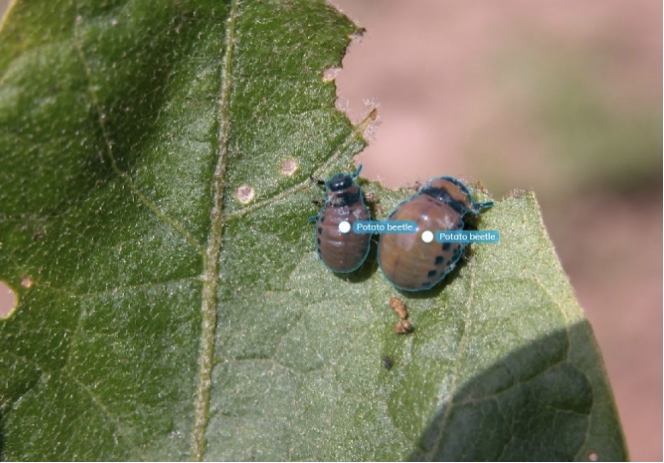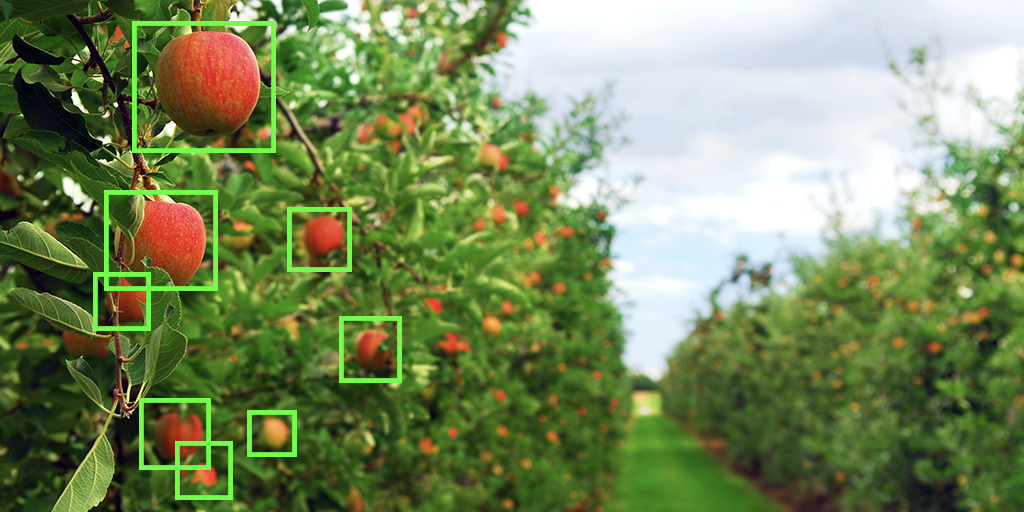The evolution of technology and innovations during our era is vastly transforming our lives. The rise of Artificial Intelligence (AI) technologies and their implementation in various areas such as computer vision is contributing immensely across industries. The agricultural industry is a sector that has started incorporating computer vision in its mode of operations1. Computer vision, although might seem simple, is a complex and multidisciplinary field, using multiple technological areas. Computer vision uses several cameras, possibly several types such as infrared, multispectral, thermal, or even three-dimensional cameras, acting as the system input, depending on the imaging requirements, can be used2. This “understanding” of an image is a significantly complicated affair, and the processes are typically segmented into either machine learning or deep learning. Machine learning is an algorithm-based system, that accumulates data, learns from it, and applies that data to future decisions or recommendations. Deep learning is a subset of machine learning, using a layered artificial neural network to gather information and identify patterns and learn while doing. Deep learning intents to mimic the way the human brain learns, therefore deep learning is more multifaceted and can be applied to complex problems. Current approaches depend on manned operations. This fact is responsible for several challenges3:
- Improper nutrient measurements: Improving nutrition is the ultimate necessity in farming but manual analysis falls short in determining the nutritional requirements of every crop.
- Time-consuming: Traditional agroecosystems need labor-intensive manual input.
- Requires more financial resources: A larger human workforce incurs higher costs. So, manual operations do not generate much profit.
- Lower returns: The human factor is always present in traditional farming activities resulting in falling profits.
Computer Vision Applications in Agriculture
Computer vision applications extend to areas such as planting and harvesting, weeding, and plant health detection. In the following, a few examples of computer vision in agriculture will be explained.
Crop and soil monitoring
Micro and macronutrients in the soil are probably the most critical factors for crop health and both the quantity and quality of yield. It is vital to understand interactions between crop growth and the environment to make adjustments for improved crop health. Traditionally, soil quality and crop health were determined by soil sampling, human observation and judgment but this method is neither accurate nor timely. Instead, drones (Unmanned Aerial Vehicles (UAVs)) can be used to capture aerial image data, and train computer vision models to use this for intelligent monitoring of crop and soil conditions. Visual sensing using Artificial Intelligence (AI) can analyze and interpret this data to track crop health, make accurate yield predictions, and detect crop malnutrition much faster than humans4.
Crop Maturity/Ripeness
Manual observation of tomato ripeness stages is just the kind of labor-intensive process that AI can help within precision agriculture. A study examined how well computer vision can detect maturity in tomatoes. An algorithm has been developed that analyzed color from five different parts of the tomato, and then made maturity estimates based on this data. The algorithm achieved a successful detection and classification rate of 99.31% (Figure 1). Monitoring and evaluating crop growth and maturity is labor-intensive work for farmers as they need to manually do it themselves but AI is proving capable of dealing with this task both with ease and impressive accuracy.

Figure 1: Tomato ripeness observation result from the AI-based algorithm.[5]
Insect and plant disease detection
Using image recognition technology based on deep learning, it is possible to automate the detection of plant diseases and pests. Currently, this task requires a lot of labor-intensive human searching and evaluation. However, automation of this task has been achieved by using classification, detection, and image segmentation methods to build models that can “keep an eye” on plant health. For example, researchers trained a Deep Convolutional Neural Network using images of apple black rot, which had been annotated by botanists according to four major stages of severity. The AI model in this study was able to identify and diagnose disease severity with an accuracy of 90.4% (Figure 2)! AI technology went even further by using an improved “You Only Look Once” (YOLO) algorithm to detect multiple diseases and pests on tomato plants. Photos at local tomato greenhouses were taken and the algorithm managed to identify 12 different cases of either disease or pests. After the model was trained, it achieved a disease and pest detection accuracy of 92.39% with a detection time of just 20.39 ms67.

Figure 2: Results of leaf disease detection using computer vision[7].
Finding bugs with code
Computer vision systems for insect detection are capable of saying not only if your crops have pests, but also how many there are. Real-time images of six different species of flying insects were collected and identified using the detection and coarse counting method on YOLO object detection, and the classification and fine counting on Support Vector Machines (SVM) using global features. The computer vision model was able to identify bees, flies, mosquitoes, moths, chafers, and fruit flies with an accuracy of 90.18%, and count them with 92.5% accuracy (Figure 3). This shows that the future of AI computer vision for monitoring the health of our food systems is promising. Not only can it reduce labor inefficiencies, but also it can do so without sacrificing the reliability of the observations.

Figure 3: Insect detection and identification using computer vision[7].
The Future of Computer Vision in Agriculture
The growing and increasingly affordable availability of computer vision stand to become another significant step forward. With considerable changes occurring in our climate, environment, and global food needs, AI can transform 21st-century agriculture by:
- Increasing efficiency of time, labor, and resources.
- Improving environmental sustainability.
- Making resource allocation “smarter”.
- Providing real-time monitoring to promote greater health and quality of produce.
The implementation of such technologies will definitely require some shifts in the agricultural industry and the farmers’ knowledge of their “field” will need to be translated into AI training. This will depend on greater technical and educational investments within the agricultural sector but then again, innovation and adaptation are nothing new in agriculture. Computer vision and agricultural robotics are probably the rising technologies farmers can adopt to meet growing global food demands and increase food security, whilst ensuring low environmental footprint8.
References
1
https://viso.ai/applications/computer-vision-in-agriculture/
2
https://medium.com/swlh/computer-vision-in-agriculture-d84b69c6858e
3
https://indatalabs.com/blog/agriculture-and-computer-vision
4
https://www.v7labs.com/blog/ai-in-agriculture
5
https://www.v7labs.com/blog/ai-in-agriculture
6
https://blog.superannotate.com/computer-vision-in-agriculture/
7
https://www.v7labs.com/blog/ai-in-agriculture
8
https://www.v7labs.com/blog/ai-in-agriculture

